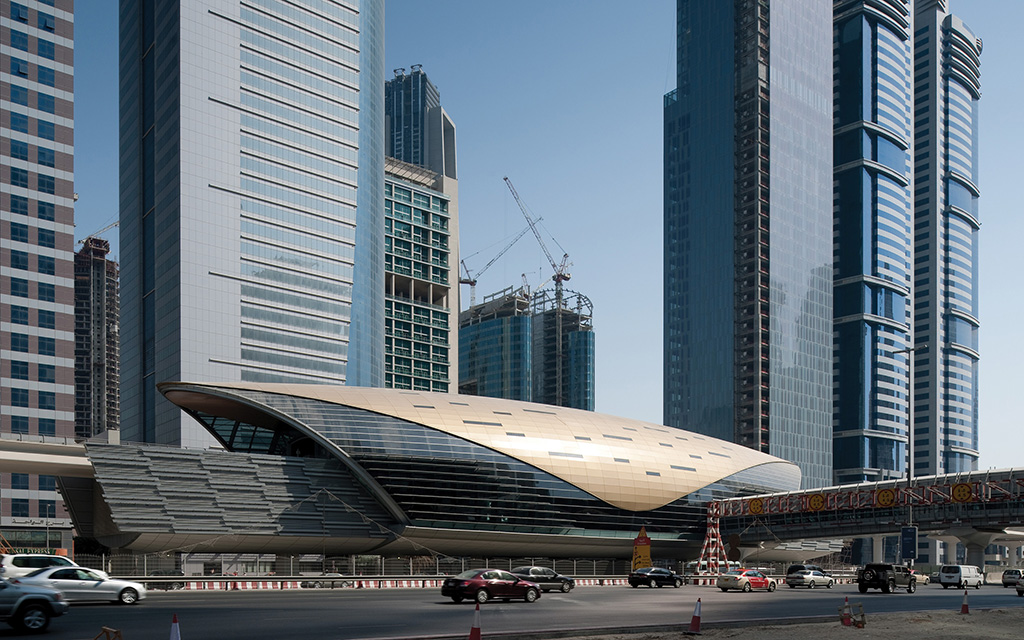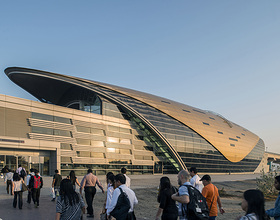DUBAI METRO
-
The Aedas team thought they had missed out when its developer client in a six way contest failed to win the vast Dubai Metro contract. It was to be the world's largest and most advanced automated passenger transit project in the world, 74 km long, 45 stations, nine of them underground plus two depots and operational control centres. And it was to be the first urban metro network in the Gulf states.
Aedas was comfortable with schemes of this size because the practice had designed very successful mass transit rail projects in Toronto, Kuala Lumpur, Delhi, Hong Kong, Singapore and elsewhere. Six weeks later the winning developer contacted them and said that they had liked Aedas's group of design concepts and could they talk.
The Dubai Metro has two lines. The Red line extends from Dubai airport, across Dubai Creek, past the financial centre of the city and down to Dubai Marina. The shorter Green line, which is largely underground, serves the older Bur Dubai District along Dubai Creek opposite the Dhow Harbour.
Each of the stations is based on two levels: the platforms on one, the ticket office concourse and retail franchises on the other with the level containing rail track and platforms typically above the ticket barrier level according to whether the lines are elevated, on the Red Line the most frequently occurring configuration. But the arrangement can vary for ground level and underground stations.
In the 40 degree Celsius weather, trains are air conditioned and platform-edge screens maintain the integrity of conditioned air in carriages. Trains are driverless although there are trained warders to deal with emergencies and to police the various special carriages, among them the women and children-only carriage.
In its search for form references, the team pondered the history and traditions of old Dubai and its heritage as a pearling village. The team attached to the idea of the rough outer surface of pearl shells and how different and smooth were the shell's interiors. With those broad ideas of shell and rough and smooth on board they began to explore appropriate shapes and what that might mean in terms of construction.
The end solution was a cone-like shape from which the double ended armadillo-like shell was developed. Before this analysis it had been assumed that the structure would be a fashionable and efficient diagrid involving the use of a triangulated network of relatively modest steel members. A diagrid is most efficient when deployed for relatively big buildings. For the more modest scale of a Dubai Metro stations it turned out that the most economical solution which used a lot less steel was a row of hoop-shaped ribs spanning the platforms and tracks of each station which support curtain wall glazing and a skin of quadratic flat panels which wraps over the functioning parts of the station.
Photo credits: Aedas
1870 Projects








